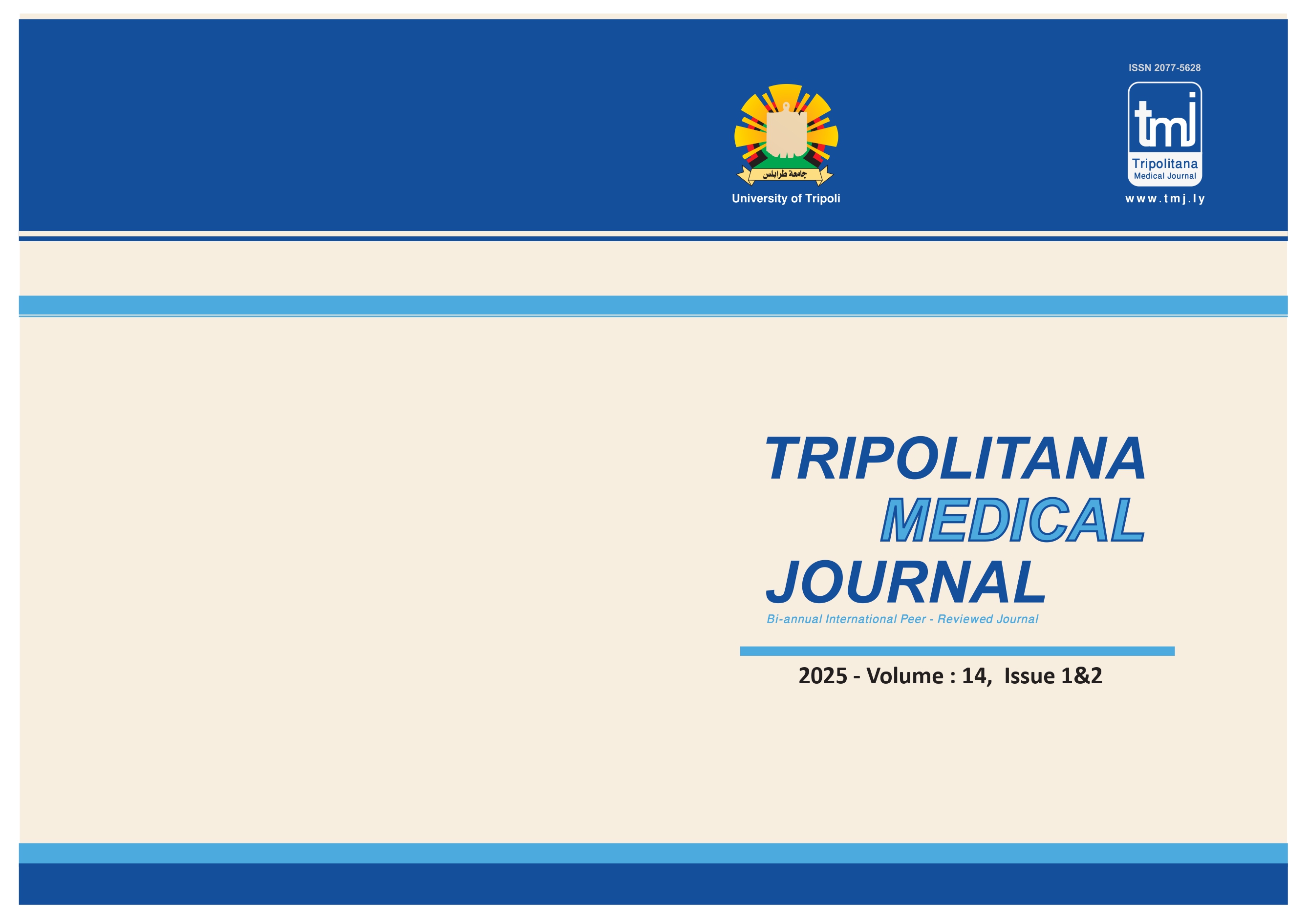Prevalence and Antibiotic Resistance of Enterobacteriaceae in Urinary Tract Infections: A Retrospective Study at Secondary Healthcare Center-Tripoli, Libya
الكلمات المفتاحية:
Antibiotic Resistance; Escherichia coli; Al-Nokhba Medical Clinic.الملخص
Urinary tract infections (UTIs) are prevalent bacterial infections that affect millions globally and lead to significant morbidity.
UTIs are classified as uncomplicated or complicated, with various risk factors and causative agents, primarily uropathogenic
Escherichia coli (UPEC).
This study aims to determine the prevalence and antibiotic resistance patterns of Enterobacteriaceae in UTI patients at AL
Nokhba Medical Clinic, Tripoli, Libya.
A retrospective, observational study was conducted from September 2021 to September 2023, including patients with positive
urine cultures. Antibiotic susceptibility was tested using the disc diffusion method.
Out of 220 positive urine cultures with significant bacterial growth, 191 samples were identified as Enterobacteriaceae. The
most common pathogens were Klebsiella spp. (62.3%) and Escherichia coli (33.5%). Multidrug-resistant Enterobacteriaceae
(MDRE) constituted 16.75% of the samples. MDRE showed a high resistance rate to amoxicillin-clavulanic acid and third
generation cephalosporins, compared to carbapenems and fosfomycin.
The study highlights the prevalence of Enterobacteriaceae in UTIs and the significant antibiotic resistance, emphasizing the need
for appropriate empirical therapy based on local antibiogram data. Regular surveillance of microbial prevalence and resistance
patterns is crucial for guiding effective treatment.




